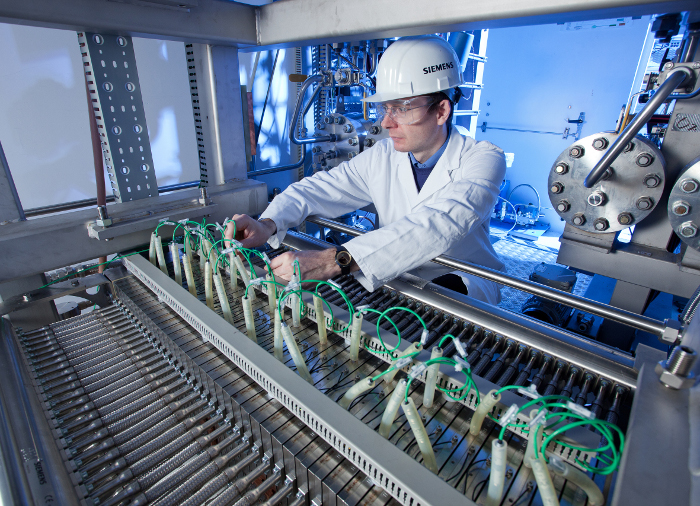From pv magazine Australia.
Recent research by Wood Mackenzie, released this week in Singapore at the analyst’s Energy & Commodities Summit – Capitalising on Asia’s Energy Transition, not only indicates that Asia Pacific’s decarbonisation bill could hit US$3.5 trillion by 2040, but more interestingly, that green hydrogen will reach cost parity in Australia by 2030.
Wood Mackenzie’s analysis shows that the Asia Pacific region is set to become the leading market for new solar and wind installations in the world by 2040. The region currently has 540 GW of installed capacity for solar and wind and is expected to add 1,528 GW over the next two decades.
With this rapid increase, Wood Mackenzie expects the levelised cost of solar, wind and storage projects to decline more than 3% annually over the next decade, improving exponentially in its competitiveness with fossil-fuel energy sources. “What’s interesting,” noted Prakash Sharma, Head of Markets and Transitions in Asia Pacific for Wood Mackenzie who spoke at the Summit, “is that renewables can now be used outside the power sector as well. Electrolyser technology is improving to produce green hydrogen using electricity powered by renewables.”
The rise of green hydrogen, driven primarily by solar electrolysis, is expected by Wood Mackenzie to reach cost parity in Australia by 2030. One of the great advantages of green hydrogen is that it can decarbonise ‘difficult sectors’ such as steel, cement, chemicals, heating and heavy-duty trucking. Moreover, as Prakash pointed out, green hydrogen “can also tackle the intermittency of renewables by diverting excess supply during the day to produce hydrogen that can be stored for use in the evening when demand is high.”
It should also be said that electrolysers, even at their current stage of development, are not only able to tackle renewable intermittency issues, but can actually turn curtailment into a resource. Curtailment results from one of the key hindrances to the energy transition, namely, the inability of traditional grid networks to incorporate new renewable generation.
In Australia transmission capacity and connection to the grid have become the biggest obstacle to the energy transition. In September, the Australian Energy Market Operator (AEMO) constrained 50% of the output of five large-scale solar generators, four of which are located in Victoria, due to system strength issues. Effectively then, 50% of four of the state’s larger solar farms had their solar energy wasted.
If that 50% of solar generation were utilised in solar electrolysis and turned into hydrogen, that energy could be saved for use at night-time when demand is high. Hydrogen could effectively turn curtailment into an advantage and lessen the pressure of the transition on infrastructure.
Although green hydrogen is currently more expensive than conventional sources, Prakash told pv magazine Australia that Wood Mackenzie’s recent analysis suggests green hydrogen could reach parity in Australia, Germany and Japan by 2030, based on US$30/MWh renewable electricity and 50% utilisation hours for electrolysers. “This finding is based,” said Prakash, “on Wood Mackenzie’s proprietary research on the future of renewable electricity costs and improvements in electrolyser technology.”
Popular content

However, Prakash stressed that while technology is advancing, “policy support is still needed to facilitate demand for green hydrogen.”
“The energy transition is not something that is happening elsewhere,” rejoined Thompson. “As the global driver of energy demand, Asia Pacific now needs to embrace the technologies required to deliver sustainable growth.”
Globally, Wood Mackenzie estimates US$365 million is already invested in the green hydrogen sector and over US$3.5 billion worth of projects are currently in the pipeline. “In our accelerated transition scenario case for Asia Pacific,” continued Prakash, “we forecast the share of zero-carbon energy reaching 35% by 2040 with green hydrogen capturing up to 3% in the mix.”
Australia’s Chief Scientist Alan Finkel has noted that the majority of potential hydrogen will, “and probably should,” be produced by solar and wind-powered electrolysis. Hydrogen is a big piece of the transition puzzle, argues Finkel, “but it is not by itself the solution…What I and others envisage is that in the dream future where all our energy comes from solar and wind as the primary energy source, around 15-20% of that energy will have to be delivered as a high-density transportable fuel and hydrogen is the ideal candidate.”
South Australia’s recently released Hydrogen Action Plan (HAP) is a strategic plan to take advantage of the state’s more than 50% renewable energy mix. HAP looks to make South Australia a green hydrogen producer and exporter.
By Blake Matich
This content is protected by copyright and may not be reused. If you want to cooperate with us and would like to reuse some of our content, please contact: editors@pv-magazine.com.


There’s green hydrogen, and green hudrohen plus. The jury is still out on the tricky question whether it will be better to use the hydrogen as is (cheap, but the very low boiling point and tiny molecule size complicate transport and storage) or to upgrade it at some cost to more manageable synthetic hydrocarbons or ammonia.
One day politicians will wake up and realise that power from nuclear generation solar, wind and solar can be the ONLY way to power the planets needs and this means using hydrogen generated from electrolysis and catalytic splitting of water to make liquid fuel for all forms of transport, from drones to ships lorries etc(all of which currently are working!)